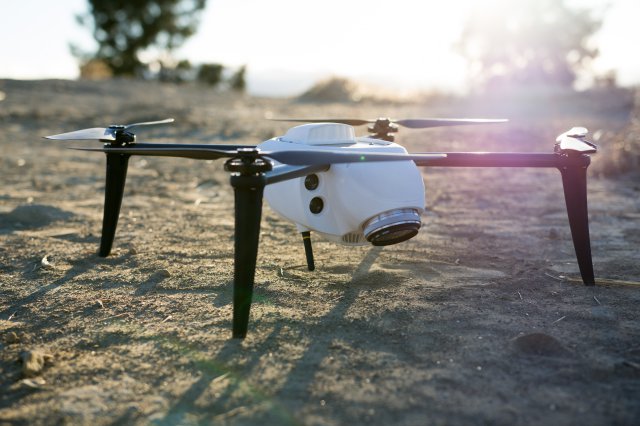Delivering drone inspections to the insurance industry
 Tuesday, September 13, 2016 at 01:00PM
Tuesday, September 13, 2016 at 01:00PM Understanding the full extent of damage to infrastructure after incident like a storm or fire is a hugely important — and valuable — service.
So how would you go about it?
You could send some people in (once all the hazards are removed) to manually document the damage, renting equipment like cherry pickers and scissor lifts, and then collating all that data to build a full picture.
Or you could get some smart, flying robots to do it for you.
Using drones to provide aerial inspection services to the building and insurance industry.

Water tank inspection using DJI drone
Many have gotten very good at it. They regularly deliver huge amounts of drone data to their clients — comprehensive inspection sets with important visual details.
But getting this data to their clients wasn’t as efficient as the rest of their operations — often, they relied on on USB sticks and external hard drives, using couriers or mail services .
It was time for a change allowing Cloud-based processing and delivery.
Large insurance events — such as storms — require a rapid response. Services dispatch their pilots with minimal notice, and they need the captured imagery to be available for analysis as soon as possible.
Insurers want a tool that could not only process inspections quickly online, but could produce them according to their specific outputs and formats.
High-quality visualizations with client and user access
With a growing client base across the building and insurance industries, service providers understand that ease of use makes their clients more likely to engage with the data.
A new way of working — with Propeller
Propeller can start delivering inspections to their clients online.

Water tank inspection delivered via Propeller platform
They set up a simple and reliable workflow that means their clients get easy-to-understand inspection sets quickly after an insurance event or risk assessment:
- Users deploy pilots from their network
- The pilot uploads their data securely through the cloud to Propeller for processing
- Propeller produces outputs and formats according to specification within 8 hours
- Clients can view and analyze their inspections through an online portal

Annotation tool helps you mark areas for further assessment and repairing
This straightforward workflow helps users increase their efficiency and ultimately competitiveness — in a time-sensitive industry. Four months after signing up with Propeller, one customer had this to say:
“We love working with Propeller, who continue to build a fantastic product and provide a world-class service. The challenge of helping our clients understand the immense opportunity drone technology affords is complicated, but Propeller simplifies this process and helps us bring our clients along on what is ultimately a transformational time for their industries as they begin to embrace the possibilities.”
An inspection tool that delivers on drone potential
Drones provide a safer and more efficient alternative to manned asset inspections, with rapid uptake in insurance and other industries.
Propeller’s inspection tool is delivering this data, allowing users to:
- Inspect in 3D, zooming in with high resolution on areas of interest
- Make annotations and export them alongside reference images as a PDF report
- Easily switch to view full resolution stills

A part of PDF report generated from water tank inspection set
Used alongside Propeller’s cloud software for processing and hosting drone flight images, they help to deliver quality inspections quickly and easily.




 Quantum Systems focuses on precision farming, inspection and topological mapping applications. The company just made 2nd place at a drone competition in Dubai for precision farming capabilities.
Quantum Systems focuses on precision farming, inspection and topological mapping applications. The company just made 2nd place at a drone competition in Dubai for precision farming capabilities.